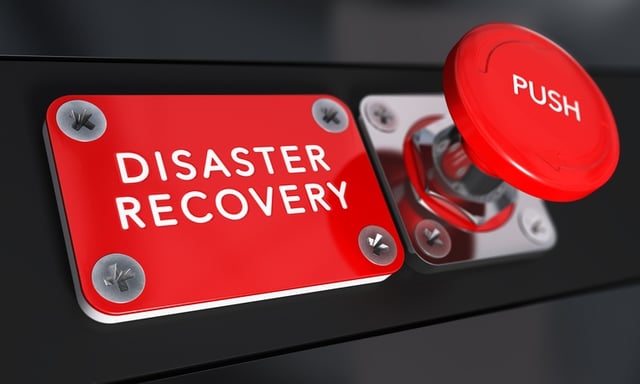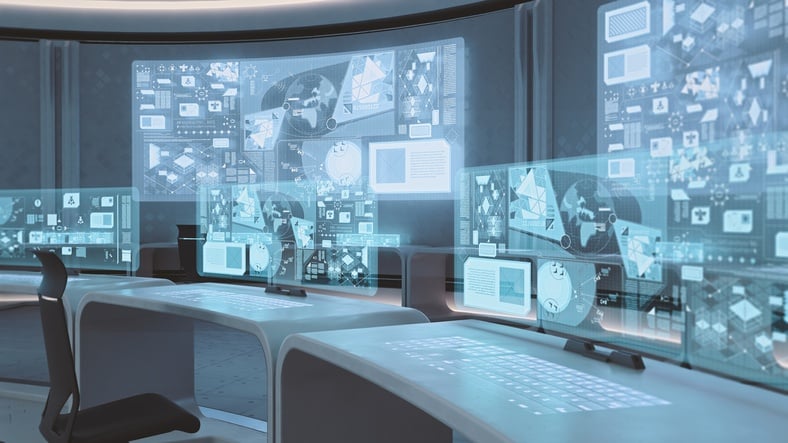Disaster Recovery Planning for Retail: 5 Steps to Ensure Success

U.S. retailers lose a staggering $60 billion a year due to customer and employee theft, fraud, and other challenges. But these aren’t the only threats facing retail companies: Like any other organization, they are also vulnerable to a wide range of disasters, from fire and flooding to social media crises and supply-chain disruptions.
Research shows that 73 percent of companies worldwide are failing in terms of disaster readiness. The same study also found that businesses lost from a few thousand dollars to millions of dollars during a single disaster-related outage.
The good news is this: With careful disaster recovery (DR) planning, your company can be ready for the many threats that it faces, effectively protecting employees, customers, and physical assets from harm. To get started, keep in mind these five steps to ensure success:
1. Establish a budget
Before diving into the planning process, it’s important to identify a budget. Disaster recovery planning can be costly, so be sure to confer with the appropriate members of your leadership team to determine your resources. This will be a good starting point for key decisions, such as whether or not to do all your planning in-house, if you are able to use DR technologies, and what types of backup or preventive systems you can implement.
2. Explore all possible scenarios
Consider what types of disasters may strike the company. For retailers, this might include a brand reputation crisis, a power outage or fire, supply-chain problems, IT system failures, product recalls, crime and theft, and physical threats to your facilities, such as severe weather and flooding.
Of course, the safety of your customers and employees is the No. 1 priority, but it’s also important to safeguard your products, facilities, and other assets. That is why your DR team needs to be prepared for every potential scenario. Meet with your team and other key stakeholders to make a list of all possible threats.
3. Start planning
Next, set about creating DR plans for each scenario. Predetermined protocols will help prepare your DR team and all employees for a wide range of emergencies. With the right plans in place, all stakeholders will know what to do before, during, and following an emergency.
Every plan should include the following:
- Relevant points of contact
- DR protocol for before, during, and after an incident, explained clearly and concisely
- All relevant systems, such as an uninterruptible power supply to prevent data loss and a fire prevention solution to limit fire damage
- Detailed lists of responsibilities for employees, management, DR team, etc.
- Communication protocol to ensure that all employees receive timely updates and instructions and are able to contact key stakeholders and emergency personnel
Plans for physical threats, such as flooding, should also include appropriate employee safety measures. For example, employees may leave the facility and relocate at a mustering point or shelter in place, depending on the scenario. Plus, if customers are in the store when an emergency hits, each employee should know what to do to help protect both themselves and shoppers.
4. Determine what can be done ahead of time
True disaster preparation involves not only planning for the moment of crisis but also taking care of key tasks before certain emergencies ever hit. Once you have determined what needs to happen during each disaster scenario, determine what can be done ahead of time to make the response more streamlined and timely.
For example, retailers might plan to preposition supplies near stores that are about to be hit by a natural disaster. You can also stock emergency supplies in various locations to help mitigate the impact of crises that occur with no notice. For example, companies like Lowe’s and Target preposition emergency supplies in their regional distribution centers so that they can be easily relocated when a hurricane or tornado hits.
5. Test each plan
Because retailers face such a wide variety of threats, testing of DR plans is particularly important. Once your plans are written, meet with key stakeholders to walk through each one. Make sure that each potential vulnerability is accounted for and that all responsibilities are clearly defined.
Depending on the size and nature of your company, you might also hold regular drills or mock scenarios to ensure that the plans are working as they should and that all employees understand their roles in the response.
With multiple locations and hundreds or even thousands of employees and customers, retailers face significant challenges when it comes to disaster recovery planning. However, careful preparation and planning can help ensure that your company is prepared for whatever may happen next. By leveraging innovative DR technology, such as a mobile crisis app, the business can also ensure that all employees have anytime access to DR planning documents and can receive real-time updates and alerts to encourage the highest level of safety and improve incident response.











